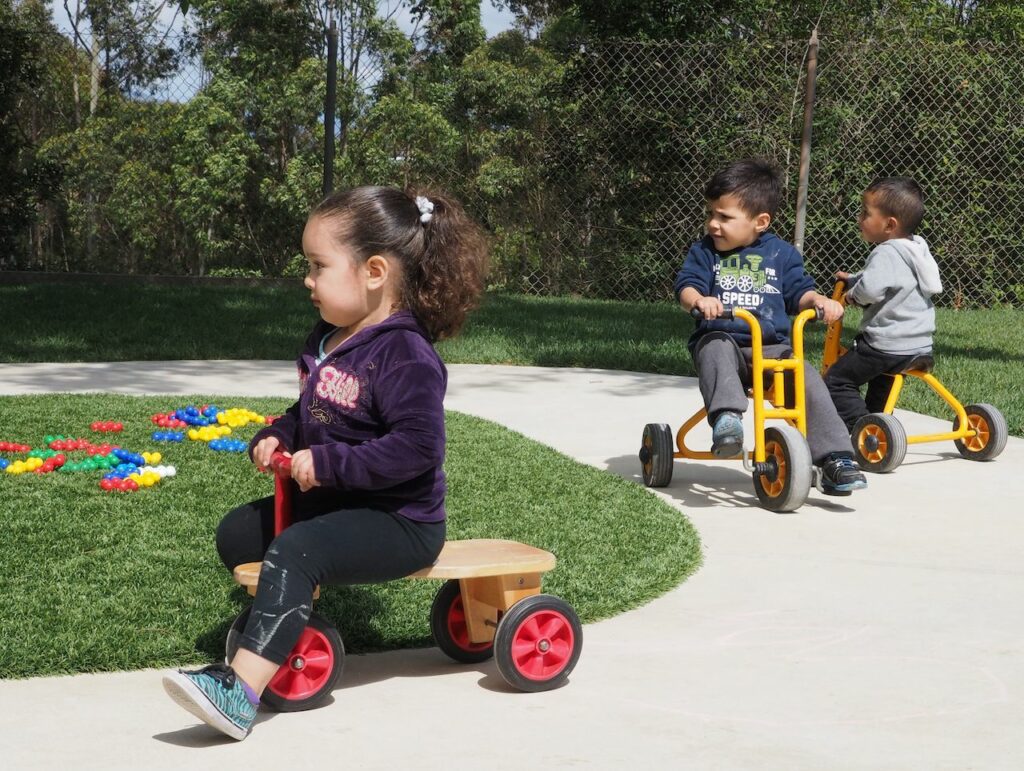While early education advocates say they appreciate Gov. Jerry Brown keeping last year’s promise to increase preschool funding – which he proposed postponing when he introduced the 2017-18 budget in January – they were disappointed that the May budget revision didn’t include additional money and changes that would allow more low-income families to qualify for subsidized child care.
The budget revision reinstates $7.9 million in funding to add 2,959 full-day state preschool slots. The revised budget proposal also increases reimbursement rates for child care providers. The 2016-17 budget had proposed a 10 percent increase for child care providers who contract directly with the state, but only about 5 percent was implemented. The budget plan now reflects the full 10 percent rate increase outlined in the 2016-17 budget. Overall, the revised budget will restore the $500 million child care package as outlined in last year’s budget.
“We applaud Governor Brown for his wise decision to fulfill last year’s commitment to child care and preschool programs,” said Ted Lempert, president of Children Now, a nonprofit research and advocacy organization based in Oakland. However, Lempert continued, “… the May revise still misses the mark by failing to leverage available resources to expand funding beyond the baseline commitment last year.”
The governor’s May revision is a step in the right direction, said Kim Pattillo Brownson, vice president of Policy and Strategy at First 5 LA, an early childhood advocacy organization in Los Angeles County. Still, those changes are just foundational, Pattillo Brownson said. It’s time to build on that by prioritizing investments for working families who don’t have adequate access to child care, especially for infants and toddlers where the shortage is most severe, she said.
In Los Angeles County, child care centers have the capacity to serve only 13 percent of working parents with infants and toddlers. In addition, Pattillo Brownson said, only 41 percent of kids in that county have access to child care.
“We take those (numbers) really seriously because if they don’t have the benefit of early education on the front end, then when they get to K-12 they end up starting behind,” she said. “And we know for low-income and children of color, sometimes that means they stay behind.”
Advocates say one of the most pressing issues left unaddressed by the budget is the outdated income eligibility limit for families receiving subsidized child care. Families in California qualify for subsidized child care by meeting income limits based on the state median income. However, California has not increased its income eligibility limit since 2008, according to researchers at the California Budget & Policy Center. In 2011 there was an update to income eligibility, but even then, it lowered the limit instead of increasing it and was still based on the state median income from 2005, said Kristin Schumacher, a policy analyst with the organization.
Schumacher said because of the current income limit, even a minor pay raise can mean a family loses its eligibility for subsidized child care and may choose to reduce work hours or turn down a promotion to remain eligible.
“This barrier is encountered by many low-income working parents looking for subsidized care, since they often do not meet the income requirements for eligibility,” stated a recent report titled “The State of Early Care and Education in Los Angeles County.” “With the minimum wage increasing to $15 per hour by 2021, low-income earning parents who receive slight wage increases may no longer be eligible for subsidized care.”
Pattillo Brownson said it perpetuates a false story that families who begin to earn more on minimum wage are financially stable and no longer need affordable child care. “We know that’s not true, and we need to be on the right side and make sure families making minimum wage can access care for their children,” she said. Estimated changes to income eligibility, if updated based on the new state median, can be found in this report.
While Brown’s new budget proposal does not change income eligibility for child care, it includes sizable increases in child care provider payments. The new plan allots $160.3 million to provide increases for child care providers for the State Preschool Program and those who contract directly with the state, and an additional $42.2 million for other child care providers.
January’s proposed budget sought to freeze reimbursement rates in 2017-18 for child care providers. At the time, child care advocates said freezing reimbursement rates could cause some facilities to close.
Child care advocates like Deborah Kong, interim executive director of Early Edge California, said she was pleased to see the governor “keep his promise to California’s youngest children” by investing in early childhood educators and caregivers. Kong said this is the first step on a long path to ensure early child care professionals receive the reimbursement they need.
“All of the adults who care for our youngest learners need to be fairly compensated and not at poverty-level wages,” Kong said. But it’s also important to go a step beyond compensation and ensure that those employees also have adequate opportunities for professional development, she said.
Though small changes to policy can affect training opportunities for early educators, funding is still important, she said. “When we talk about how are we doing in providing quality, that’s not just a financial question, but quality does cost money,” Kong said.
Clarification: This story was updated to clarify when changes were made to the income eligibility rules for subsidized child care.
To get more reports like this one, click here to sign up for EdSource’s no-cost daily email on latest developments in education.
